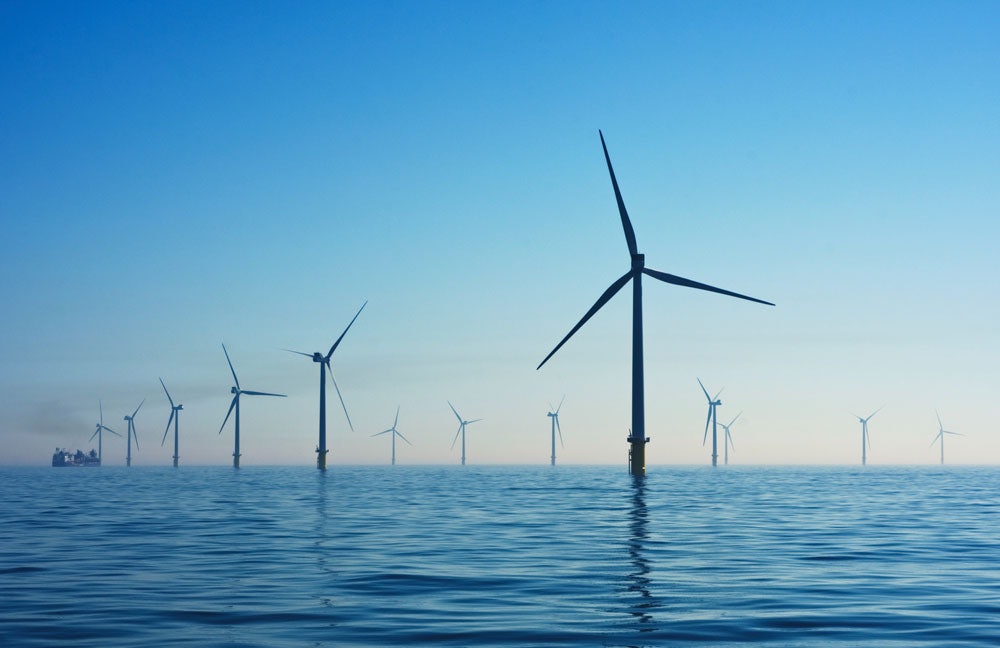Why the UK government is focussing on wind power

In a recent blog post, we explored what emerging technologies will make wind energy more efficient. Wind energy and harnessing technological advancements that make it more efficient are central to the UK's energy plan. In 2020, a year when renewable energy generated over a third of the UK’s electricity, wind energy contributed 24.7%. The UK has relied more and more on wind energy over the last decade. The amount that wind energy contributes has more than doubled since 2015 when wind energy contributed 11.0% of total UK electricity use.
The UK Government has announced significant investments into wind power as part of its clean energy programmes. Today, we will discover why the UK Government is focussing on wind power.
The UK government Clean Energy Programme
In late 2020, the UK government announced its ambitious goal to make the UK a world leader in green energy. In a 10-point plan (November 2020), the government outlined how it would help the UK reach net-zero carbon emissions by 2050. You may have seen the government announce other policies aimed at tackling climate change, like pledging to end the sale of new petrol and diesel cars by 2030. However, you may not have heard that the government has also announced plans to quadruple offshore wind power by 2030. The leap in wind energy could potentially power an extra 14 million homes.
Wind energy in the UK is central to the UK government clean energy programme and “advancing offshore wind” is the first point of the 10-point plan.
Wind energy in the UK
The UK has already invested a lot in wind energy. Since 2010, the capacity for electricity generated (megawatts, MW) has more than quadrupled. Onshore wind turbines and farms in the UK meet the needs of over seven million homes every year. The UK also leads the world in offshore wind which powers four and a half million homes each year.
In 2020, the UK added 483 MW of capacity in offshore wind installations with the installation of East Anglia One, a wind farm of 16 turbines in the North Sea. The initial phases of construction for four extra windfarms also began in 2020:
Hornsea Two (1,320 MW)
Moray East (950 MW)
Kincardine (50 MW)
Triton Knoll (857 MW)
Hornsea Two is an extension of the Hornsea One Project, the world’s first offshore wind farm to exceed one gigawatt in capacity (1.2 GW) off the Yorkshire coast. Hornsea One consists of 174 wind turbines, each 190m tall – that is taller than the BT Tower in London. Hornsea One can supply over a million homes with power. The scheduled Hornsea Two and Hornsea Three projects will add capacity for another 1.3 million and 2 million homes.
Wind energy, particularly offshore, is at the very heart of the UK Government clean energy programme.

Rampion Offshore Wind Farm, United Kingdom
The UK plan for wind energy
The UK plan for wind energy is to quadruple offshore wind power by 2030. The installation of Hornsea One and other wind farms are the first steps with others, like Hornsea Two and Three, planned. As part of this plan, the new wind farms also harness emerging technologies that will make wind energy more efficient. In a previous post, we described the new technology of floating offshore wind farms.
As part of the UK plan for wind energy, floating offshore wind is targeted to deliver 1 GW of power by 2030. To put this in perspective, this alone is 15 times the current worldwide capability. The advantage of floating offshore wind farms is that they can be built further out at sea in deeper waters where the wind is much stronger at a reduced cost.
The UK already has the world’s first two floating offshore wind farms, and the UK government has announced plans that it intends to scale this dramatically by 2030. For example, Kincardine, one of the wind farms that began construction in 2019 mentioned above, will be an offshore wind farm in Scotland.
Why invest in wind power
So why invest in wind power? Wind power is a kind of renewable energy. The same can be said for solar, so of all renewables why is the UK government focussing on wind power?
Simply put, one reason is that the UK climate is very windy. Other renewable alternatives, like solar, are less suited to the UK because of the climate. The return on investment for wind energy is calculated at 15-20 years within the UK. Compared to this, solar would take 30 years to return on investment in the UK, whereas in a hot and sunny country it could be as low as 10 years.
Another explanation for the focus on wind energy in the UK is the potential to scale wind power. The UK has the most offshore wind capacity in the world. As an island, the UK can invest in both onshore and offshore wind. The UK can take advantage of its location in the North Sea and deploy new technological developments like floating offshore wind farms that increase efficiency.
Over the past decade, the UK has invested significantly in offshore wind. Advances in technology have decreased the cost of offshore wind by 50% since 2015. New projects, like Hornsea, are both cheaper and more efficient. The UK has also invested in onshore wind because it is the most cost-effective form of electricity in the UK.
In the next 10 years, you can expect more and more of your power to come from wind-generated electricity as more wind farms spring up around the UK. Dashboard is evolving our work conducted as part of the WindTwin project to increase in the future the preventative and predictive maintenance of wind turbines, with an aim of increasing the uptake in wind power.